COVID cases among those aged 20–24 in Oxford have doubled in the last week, according to new data reported by the government, in what may be the first indication of the impact of students returning to the city for Hilary Term.
On Friday the 24th January 61 cases were recorded in the city, more than two times the 28 cases recorded a week earlier.
Despite the steep rise in cases, the prevalence of the virus remains significantly lower among university-aged students than school pupils. Children aged 5–9 were three-times more likely than those aged 20–24 to test positive for covid in the week leading up to the 24th January.
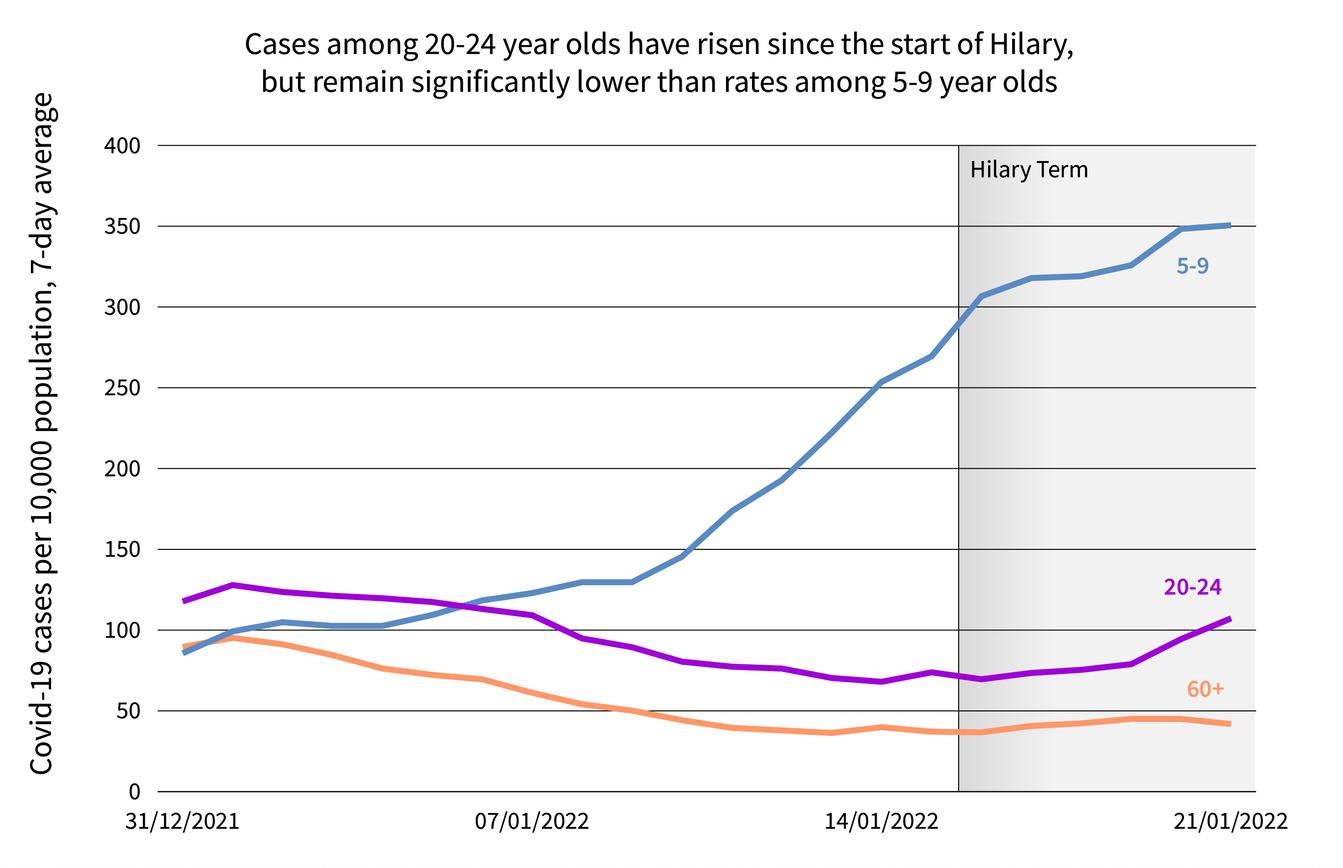
The rise in cases among younger age groups has not translated into older age groups. Those aged 60+ have maintained a steady decline in cases since the new year, although there are signs that this has begun to plateau.
Children under the age of 12 cannot currently access a Covid vaccine unless they are identified as being at high risk, which is likely to be the cause of the significantly higher case rates among this demographic.
By contrast, students at the University of Oxford have been more willing to take up either one or two doses of the vaccine than any comparable demographic, according to a survey conducted by the University.
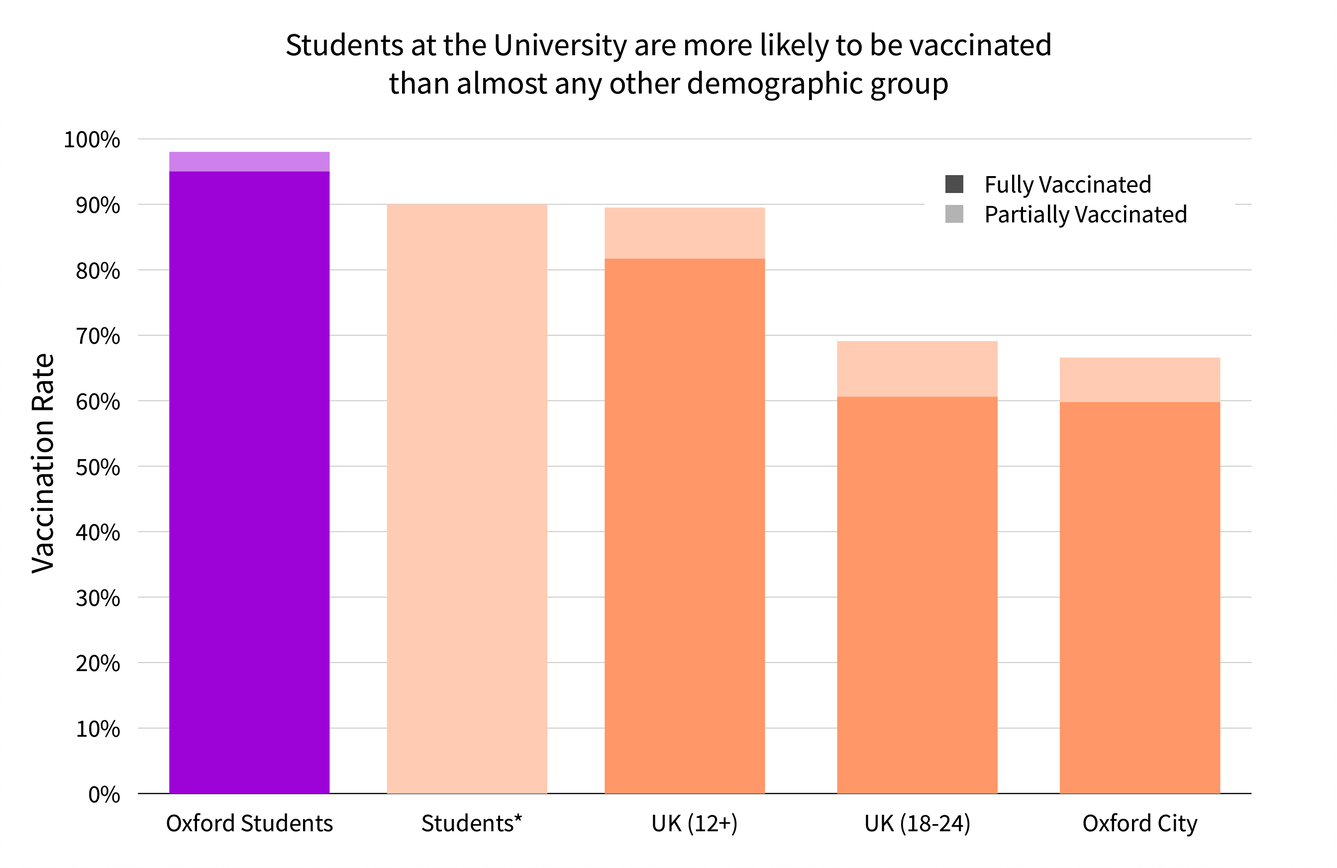
The survey, which was published during Michaelmas Term, shows that 98% of students are either partially or fully vaccinated.
The data showing a rise in cases during the beginning of Hilary Term bucks the trend set in previous terms. At the start of Michaelmas Term this year cases continued to fall in Oxford while they rose nationally, although rapid growth in the city quickly led to cases surpassing the national rate.
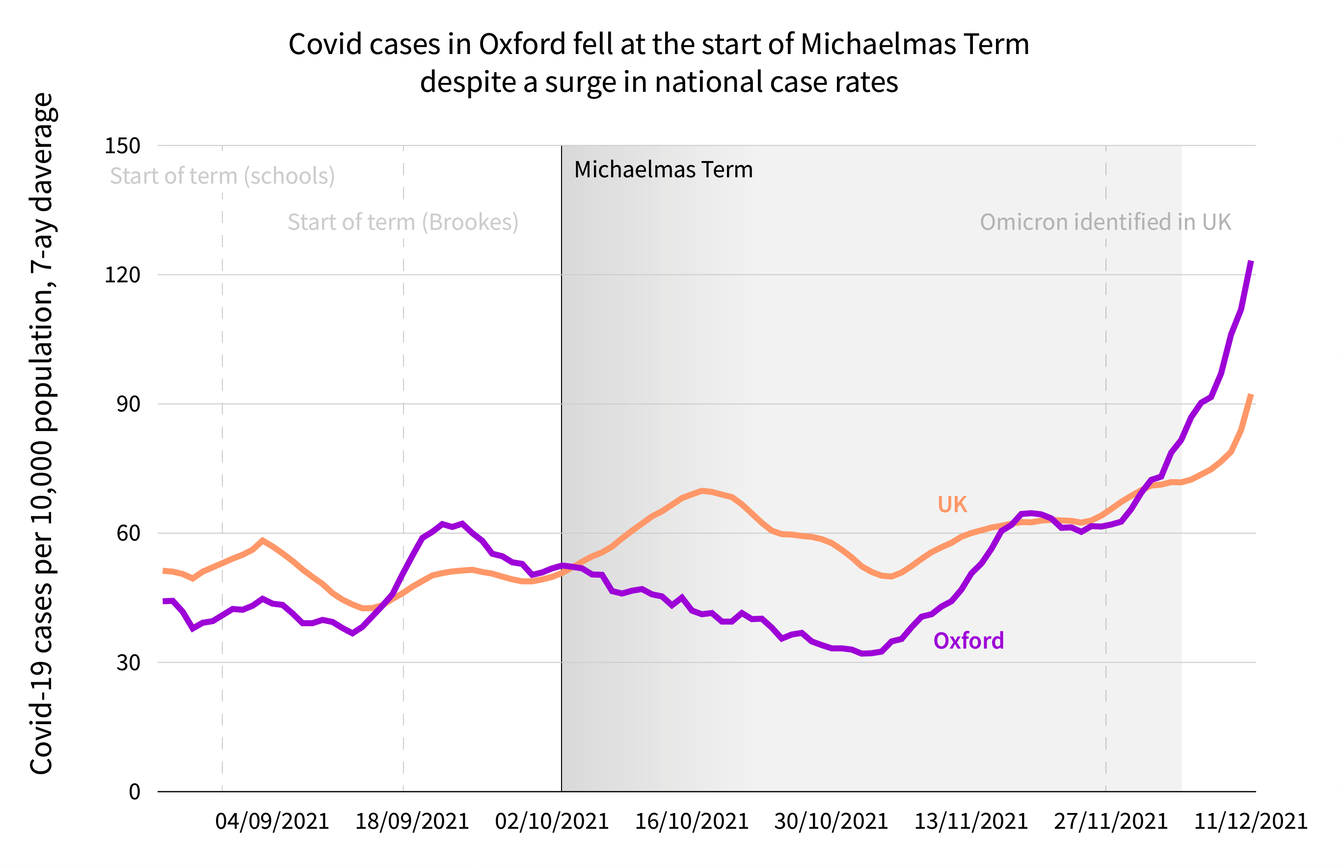
In Michaelmas 2020, too, cases in Oxford fell during the first three weeks of term, before tracking the national average more closely. The number of cases in the city spiked during fifth week, before collapsing again shortly after the introduction of the ‘circuit breaker’ lockdown.
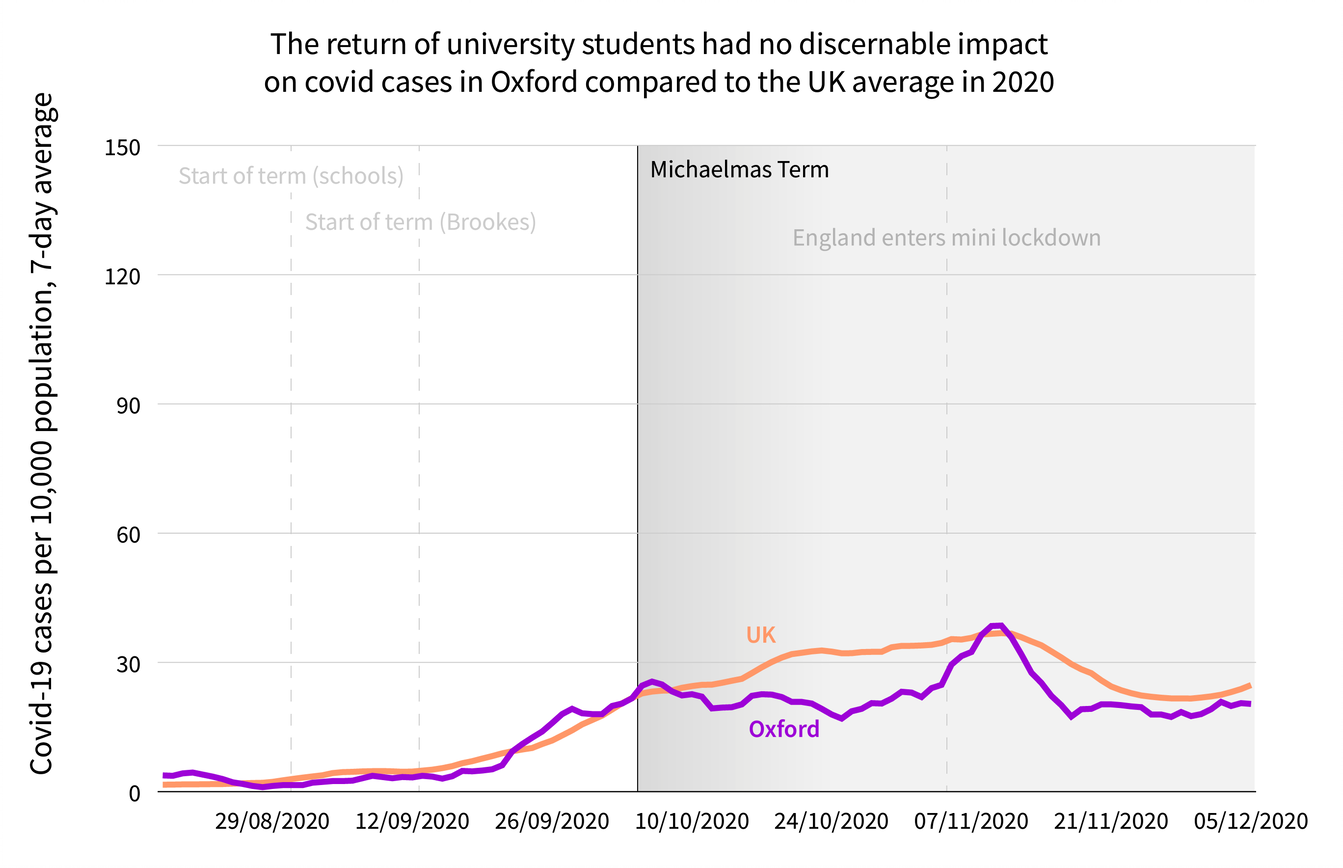
Students appear to be more likely to test themselves for the virus than either residents of the City of Oxford or the UK. According to testing data released by the University of Oxford’s Early Alert Service the test positivity rate, the number of positive cases found per test taken, was lower than either the national average or the city-wide average. This shows that students test themselves more frequently for each positive result found, an indication of the success of the EAS in identifying cases at the University.
The result is based on testing data released for the first five weeks of Michaelmas Term this year.
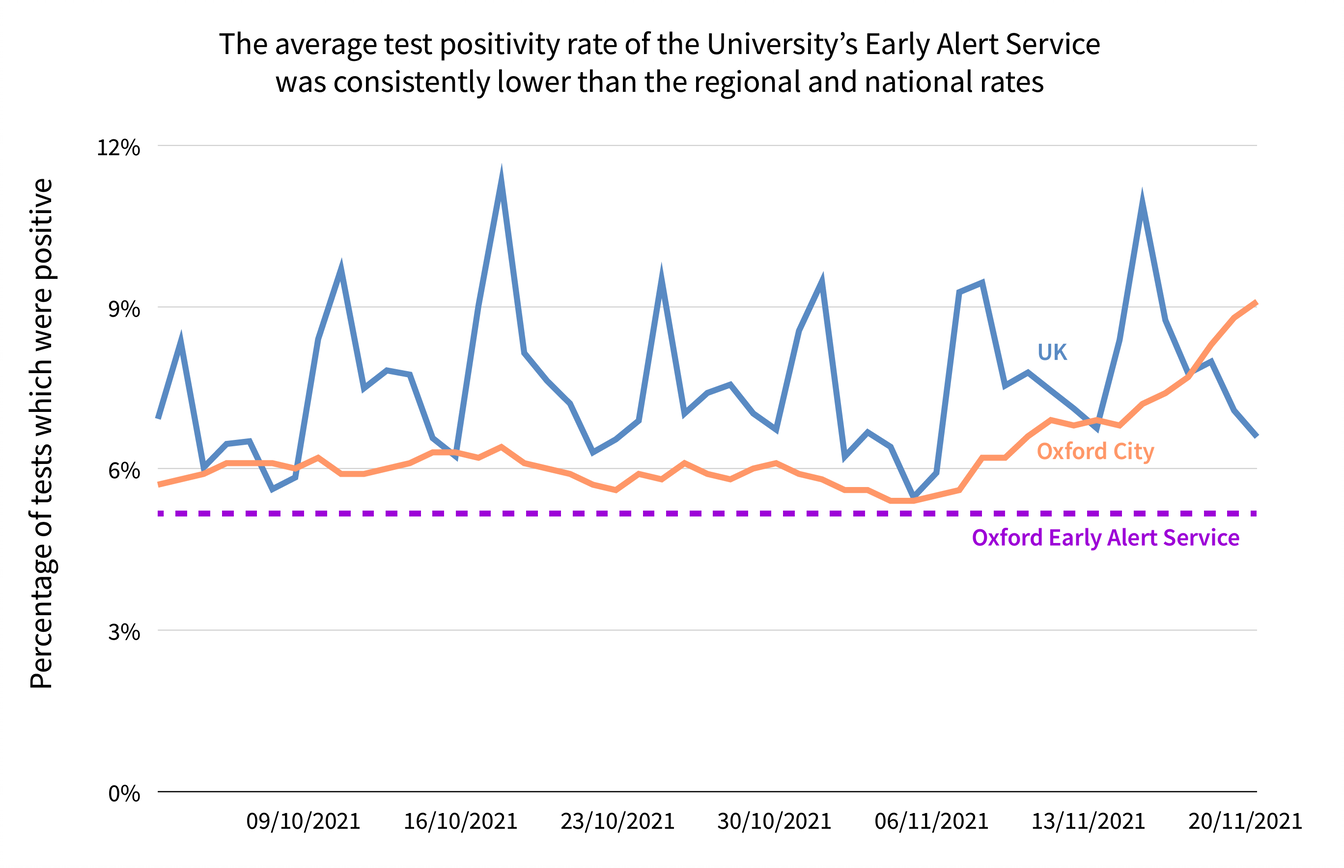
The EAS is due to release its first set of results from Hilary Term this week, which will identify the fraction of the rise in cases which are directly attributable to students and staff at Oxford.
Image: Covid-19 graphic: HFCM Communicatie, CC BY-SA 4.0 via Wikimedia Commons. RadCam: Unknown via PXHere, Graph: Felix O’Mahony


